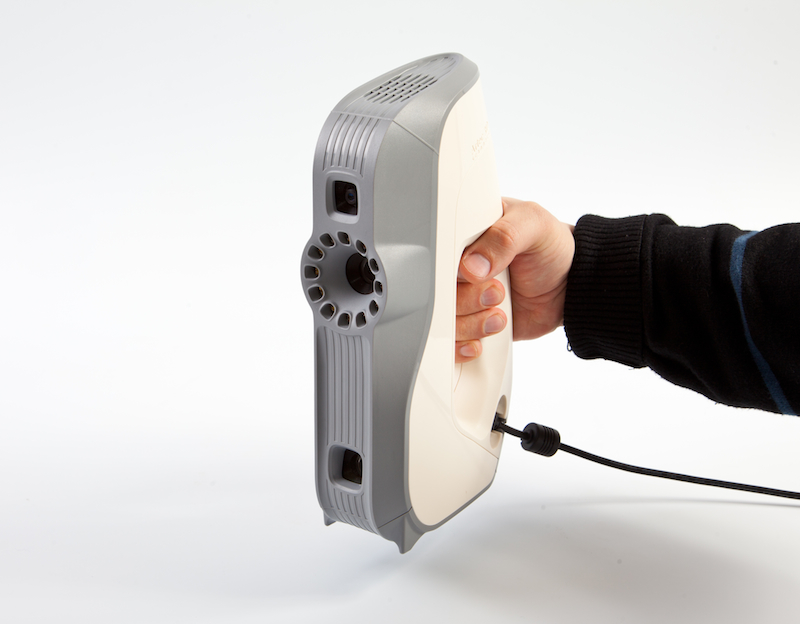Artec releases the EVA, a real-time 3D video scanner
LUXEMBOURG – Artem Yukhin president and chairman of the Artec Group, has been working on real-time 3D data capture and processing for more than 15 years. His first company, A4Vision, used real-time 3D data capture to create a new kind of facial recognition biometrics. He sold that firm to Bioscrypt (now part of L-1) in 2007.
But “the A4Vision device was not meant as a generic 3D scanner,” Yukhin said, speaking to SPAR from Luxembourg. “The real-time scanning was achieved because the algorithm had an assumption that we were going to scan the face. You know certain things about the face … but we weren’t able to scan anything else with it.”
That was the challenge for Artec, a company he founded shortly after the A4Vision sale and with many of the same colleagues who had all come together while studying at Moscow’s Bauman Technical University. “We were interested in aspects of 3D technology, not just biometrics,” Yukhin said.
The company released its first handheld structured light scanner in 2009 and hit the market two weeks ago with the brand-new EVA, which Yukhin believes finally “delivers on decades of industry promises.”
Essentially, EVA delivers real-time 3D video, at 16 frames per second, and can construct 3D point clouds and models with both the scanner and the object moving at the same time, and no need for targets or marks on the item being scanned. Plus, the device weighs less than a kilogram (the form factor is one of the more significant changes from earlier Artec scanners).
The results are not unlike those produced by the Kinect, except with .1 mm accuracy. Oh, and a €14,900 price tag. That’s still well below many commercial handheld laser scan systems, however, and it’s intended to make industrial 3D scanning more affordable – “We are very proud of what we’re doing” to democratize 3D scanning, said Yukhin.
So, what’s the technology behind the accuracy, despite the lack of any time coding or mechanical coding or lasers? “We invented a proprietary algorithm … there’s a lot of math around it,” Yukhin said, combined with a set of fairly ordinary photographic flash bulbs that flash in rapid fashion and in calculated patterns.
You can see a brief demonstration of the product here:
“Artec uses only information about the object itself,” Yukhin said, “comparing the surfaces that we capture and the color that we get, and then we stitch that together using the similarities and our robust algorithm.” It’s not completely unlike the photogrammetric algorithms used by multi-view geometry software companies like Acute3D or Urban Robotics, but “we are using structured light,” he said, “which is why we have much more precise data. The problem of the photogrammetric approach is that your precision is dependent on the object itself … you’re always dependent on what you’re scanning.”
For example, photogrammetry struggles with very smooth or single-color surfaces without much texture. With active structured light – essentially a special pattern projected onto the object – every single frame contains 3D data and so you’re matching 3D similarities with 3D similarities, not constructing 3D data from 2D data.
Even so, Yukhin acknowledges EVA has its drawbacks. Very small objects, or objects that contain many sharp edges, “are not well handled by our scanner,” he said. That will be the area Artec looks to tackle with the product that will follow EVA.
Industrial users still make up more than a third of Artec’s customers, however, and reverse engineering is a common application for the company’s scanner users in general. Yukhin expects this will continue with EVA, which has only been shipping for a couple of weeks. Currently, the other biggest customer bases are in medical applications and the historical preservation market, with archaeological objects and museum pieces.
“To be frank, when we started the company in 2008, we were technology driven,” Yukhin said. “We thought if we solved the problem, made a camera that works in real time, we’d find lots of applications. But we didn’t know exactly where we would find ourselves in terms of the market.”
Thus, Artec seems to find a user with a new application every day, from a firm that does carpeting for automobiles that scans the floors of vehicles as a first step to automobile manufacturers using the scanner as part of their design-build process.
It’s the former firm, however, where Artec sees real opportunity. While large firms will likely find a use for this kind of short-range, hand-held data capture, “There’s a much bigger market with the small enterprises,” he said.






